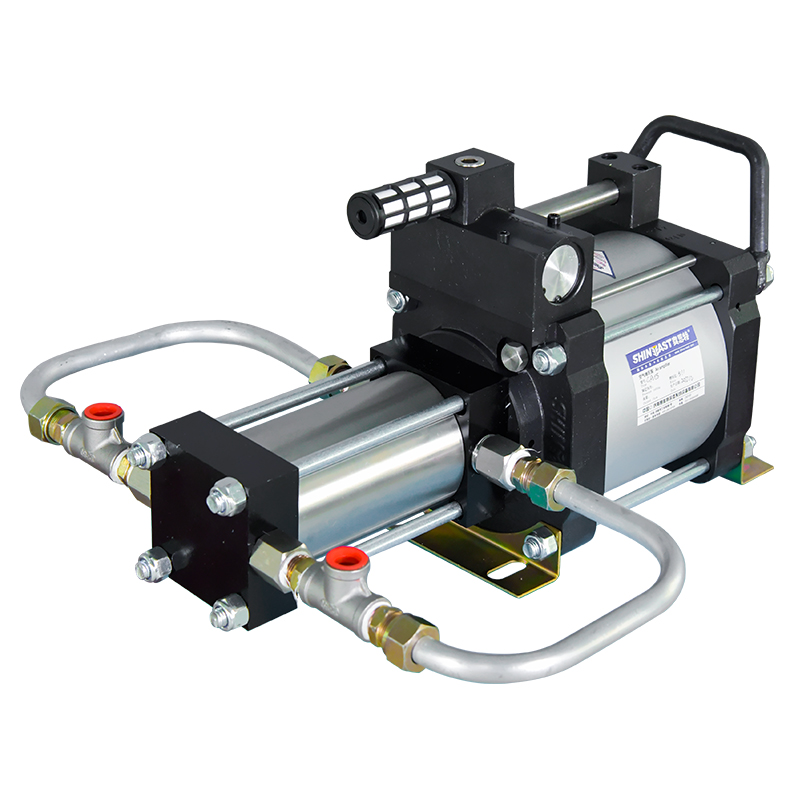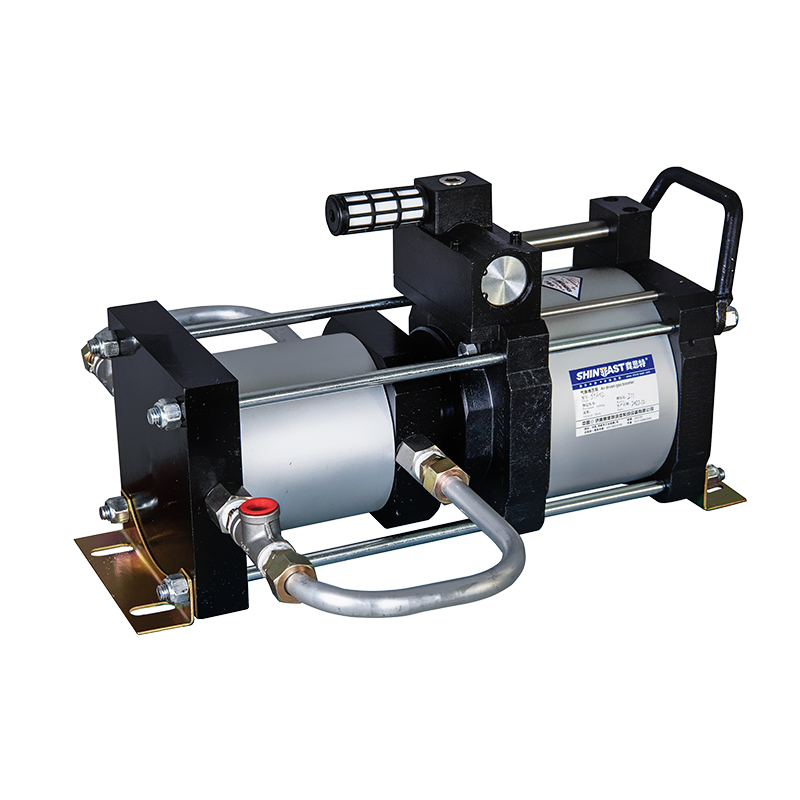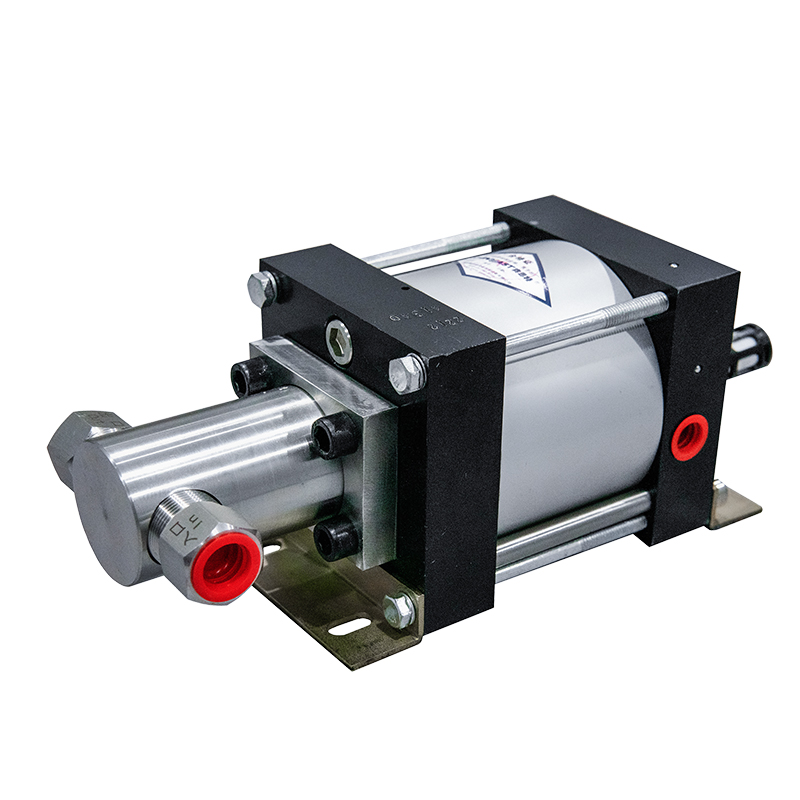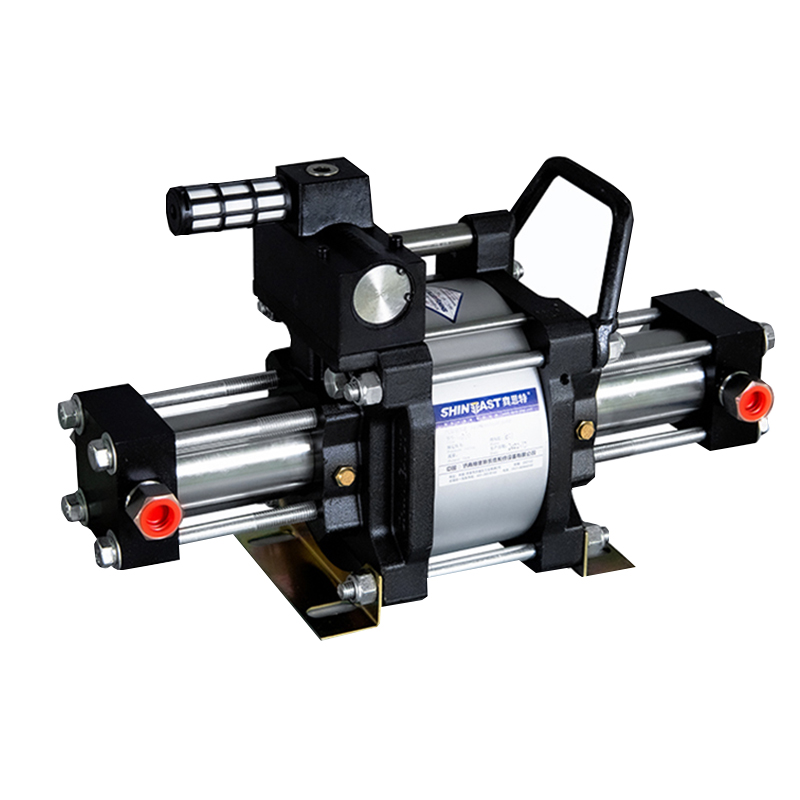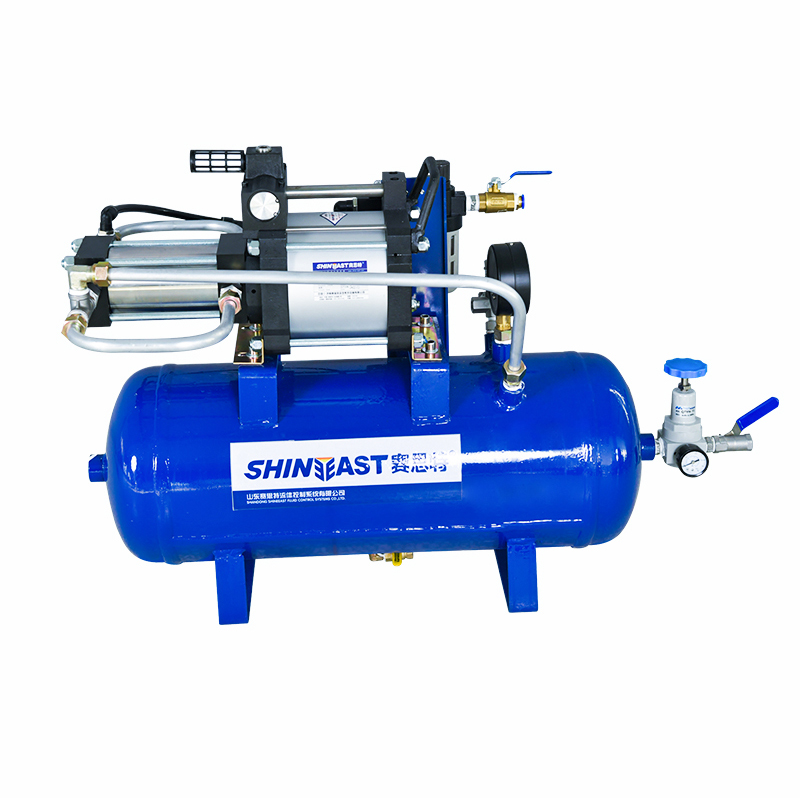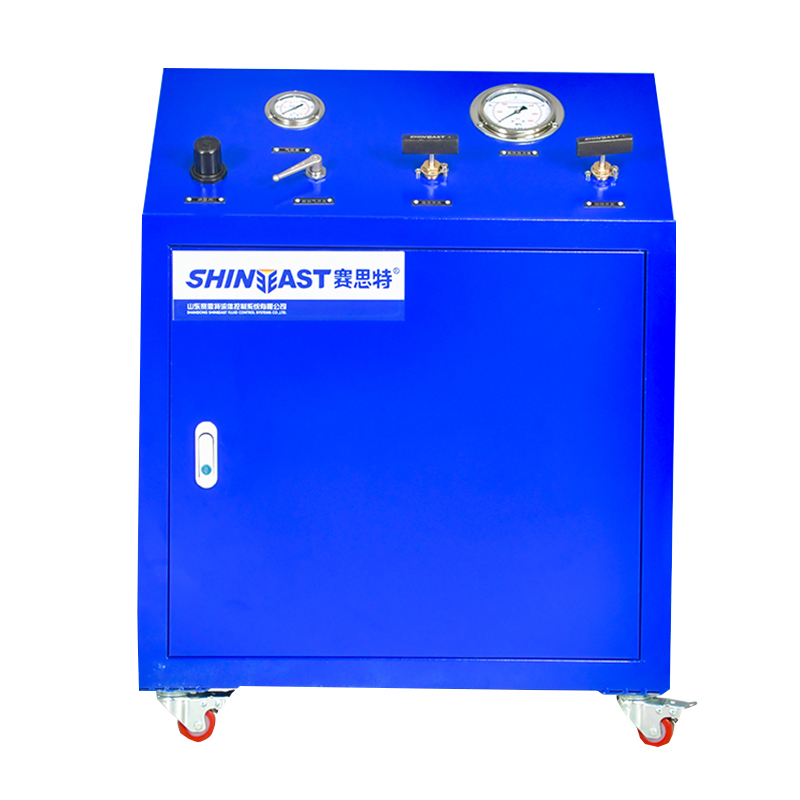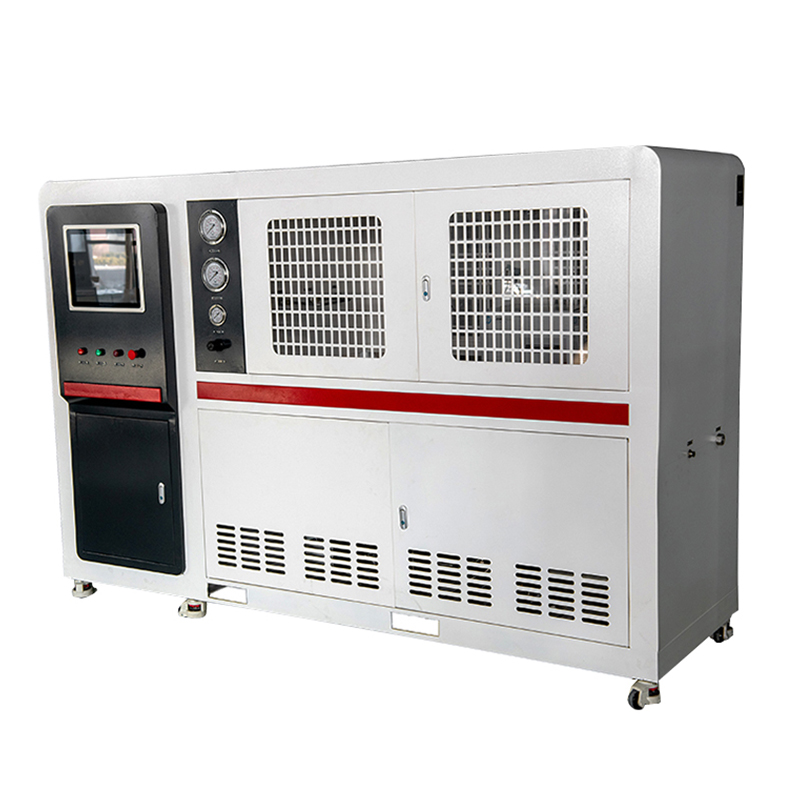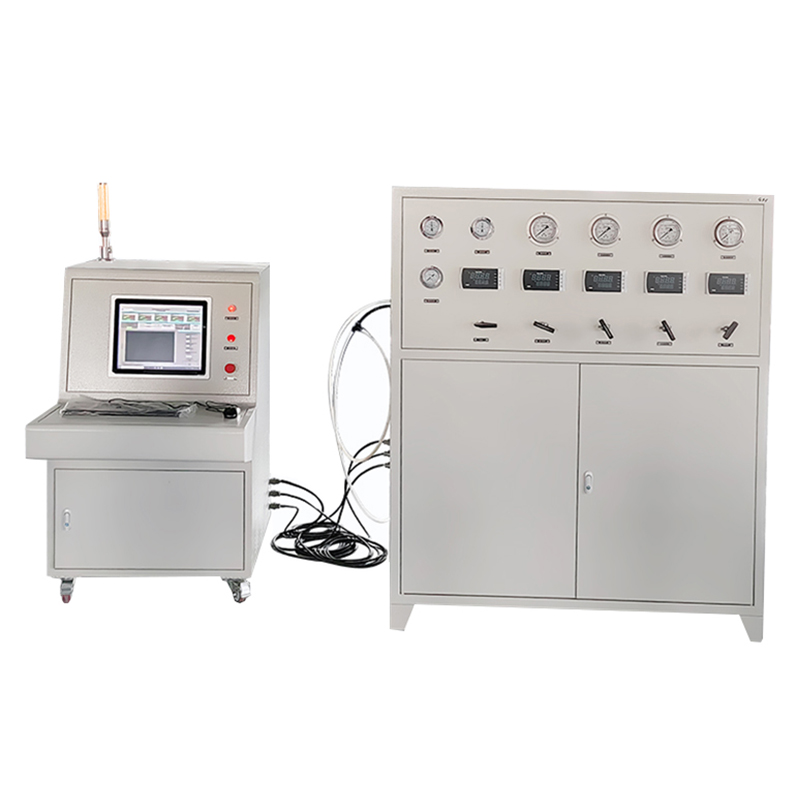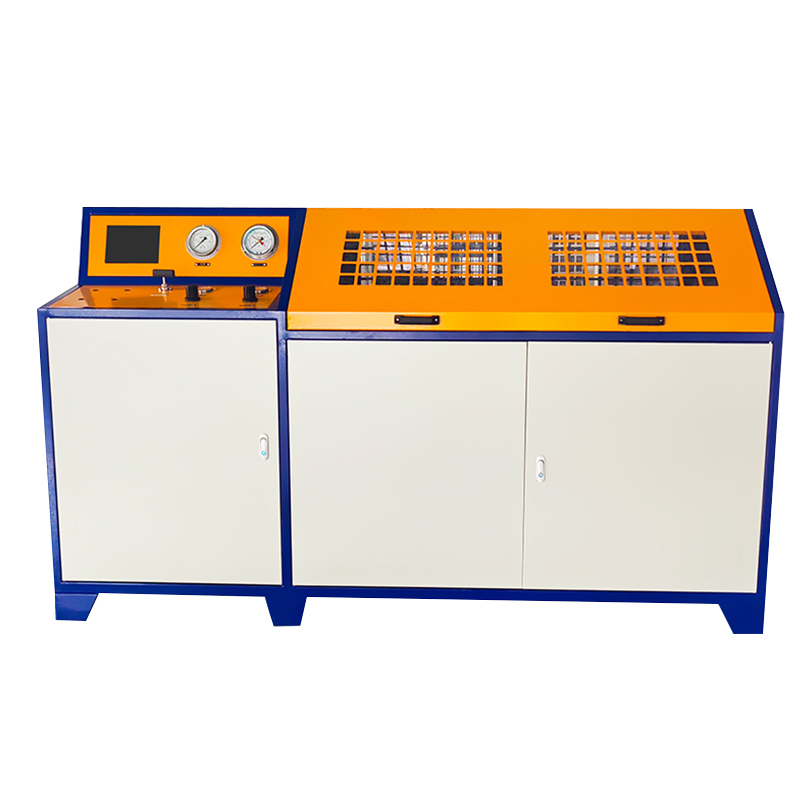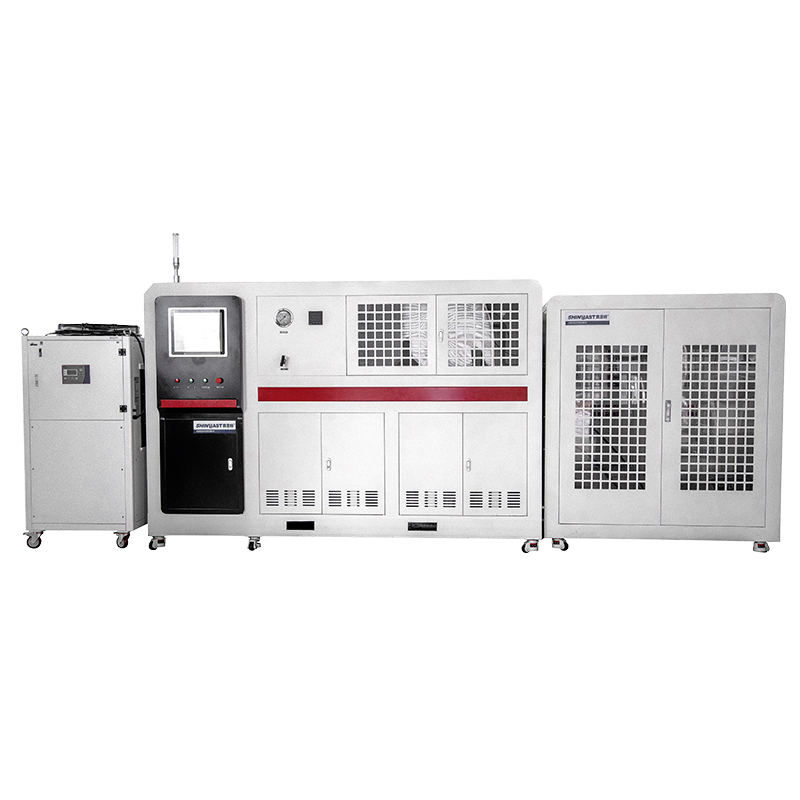Key components of valve test bench
Valve test bench is a specialized equipment used to test the performance of valves, widely used in the fields of valve manufacturing, maintenance, and quality inspection. It can simulate the working conditions of valves under actual working conditions, detect their sealing, strength, flow characteristics, etc.
The valve test bench is mainly used to test the performance of different types of valves (such as gate valves, globe valves, ball valves, butterfly valves, etc.), including pressure resistance testing, testing the strength and durability of valves under high pressure conditions. Sealing test, which checks whether the sealing performance of the valve meets the standard, is usually conducted under high and low pressure conditions. Strength testing, testing the mechanical strength of valve materials to confirm whether they can withstand working pressure. Switch performance testing to evaluate the opening and closing performance, torque requirements, and flexibility of valve operation. Flow testing to check the flow rate of valves at different openings.
Install the valve to be tested on the test bench and secure it with a clamping device. Connect appropriate testing media (water, gas, oil, etc.) as needed, and ensure that the testing system and valves are leak free. Apply test pressure to the valve through a hydraulic or pneumatic system, usually gradually increasing from low pressure, and observe whether the valve leaks or ruptures. Use pressure sensors and testing recording systems to record pressure values, sealing conditions, flow rates, and other data. Analyze the test data to determine whether the valve meets the quality standards and design requirements.
Valve test benches are widely used in industries such as petroleum, chemical, natural gas, power, shipbuilding, pharmaceuticals, and food processing to ensure that valves used in these industries can operate safely and reliably under complex working conditions. Its structure usually includes the following key components:
1. Main frame (main frame): The main frame is the foundation structure of the entire valve test bench, usually made of steel or alloy, with high strength and rigidity, capable of bearing the pressure and torque generated during testing.
2. Hydraulic or pneumatic system: The hydraulic or pneumatic system is the core of valve testing, used to apply pressure for testing. Apply pressure through hydraulic oil or compressed air to test the sealing and pressure resistance of valves under high or low pressure conditions.
3. Clamping device: Valve test benches are usually equipped with clamping devices to secure the valve under test. Clamping devices are usually divided into three types: manual, hydraulic, or pneumatic, and the clamping force is adjusted according to the size and type of the valve.
4. Sealing system: used to prevent leakage of pressure medium during the testing process and ensure the accuracy of the test. The sealing system usually includes sealing components such as O-rings and rubber gaskets, which can tightly adhere to the interface of the valve.
5. Pressure sensors and pressure gauges: These sensors are used to monitor the pressure values applied to the valve during the testing process, ensuring the accuracy of the test data. The pressure gauge or sensor will display real-time pressure readings to help operators determine the pressure resistance of the valve.
6. Control system: The control system is used to regulate and control the working status of hydraulic and pneumatic systems, including the application, maintenance, and release of pressure. Modern valve test benches are usually equipped with PLC (Programmable Logic Controller) or computer control systems, which can automate the control and data recording of the test process.
7. Medium storage and circulation system: The test bench is usually equipped with a storage and circulation system for media such as water, gas, or oil, which is used during the testing process. These media will be transported through pipelines to valves for testing, simulating the fluid environment during actual valve operation.
8. Safety protection device: In order to ensure the safety of the testing process, the test bench is usually equipped with safety facilities such as safety valves, overpressure protection devices, emergency stop buttons, etc., to prevent unexpected situations during testing.
9. Valve type adapter: The test bench needs to adapt to various sizes and types of valves, so it is generally equipped with multiple adapters that can be quickly replaced to adapt to different valves for testing.
10. Test recording system: Modern valve test benches often have automatic data recording functions, which record the data (such as pressure values, time, etc.) during the testing process, generate reports, and use them for valve performance evaluation.
The design of the valve test bench can be customized as needed to ensure the ability to test valves of different specifications and types. The valve test bench is used to test the performance of various types of valves, such as pressure, sealing, and strength.
The valve test bench is mainly used to test the performance of different types of valves (such as gate valves, globe valves, ball valves, butterfly valves, etc.), including pressure resistance testing, testing the strength and durability of valves under high pressure conditions. Sealing test, which checks whether the sealing performance of the valve meets the standard, is usually conducted under high and low pressure conditions. Strength testing, testing the mechanical strength of valve materials to confirm whether they can withstand working pressure. Switch performance testing to evaluate the opening and closing performance, torque requirements, and flexibility of valve operation. Flow testing to check the flow rate of valves at different openings.
Install the valve to be tested on the test bench and secure it with a clamping device. Connect appropriate testing media (water, gas, oil, etc.) as needed, and ensure that the testing system and valves are leak free. Apply test pressure to the valve through a hydraulic or pneumatic system, usually gradually increasing from low pressure, and observe whether the valve leaks or ruptures. Use pressure sensors and testing recording systems to record pressure values, sealing conditions, flow rates, and other data. Analyze the test data to determine whether the valve meets the quality standards and design requirements.
Valve test benches are widely used in industries such as petroleum, chemical, natural gas, power, shipbuilding, pharmaceuticals, and food processing to ensure that valves used in these industries can operate safely and reliably under complex working conditions. Its structure usually includes the following key components:
1. Main frame (main frame): The main frame is the foundation structure of the entire valve test bench, usually made of steel or alloy, with high strength and rigidity, capable of bearing the pressure and torque generated during testing.
2. Hydraulic or pneumatic system: The hydraulic or pneumatic system is the core of valve testing, used to apply pressure for testing. Apply pressure through hydraulic oil or compressed air to test the sealing and pressure resistance of valves under high or low pressure conditions.
3. Clamping device: Valve test benches are usually equipped with clamping devices to secure the valve under test. Clamping devices are usually divided into three types: manual, hydraulic, or pneumatic, and the clamping force is adjusted according to the size and type of the valve.
4. Sealing system: used to prevent leakage of pressure medium during the testing process and ensure the accuracy of the test. The sealing system usually includes sealing components such as O-rings and rubber gaskets, which can tightly adhere to the interface of the valve.
5. Pressure sensors and pressure gauges: These sensors are used to monitor the pressure values applied to the valve during the testing process, ensuring the accuracy of the test data. The pressure gauge or sensor will display real-time pressure readings to help operators determine the pressure resistance of the valve.
6. Control system: The control system is used to regulate and control the working status of hydraulic and pneumatic systems, including the application, maintenance, and release of pressure. Modern valve test benches are usually equipped with PLC (Programmable Logic Controller) or computer control systems, which can automate the control and data recording of the test process.
7. Medium storage and circulation system: The test bench is usually equipped with a storage and circulation system for media such as water, gas, or oil, which is used during the testing process. These media will be transported through pipelines to valves for testing, simulating the fluid environment during actual valve operation.
8. Safety protection device: In order to ensure the safety of the testing process, the test bench is usually equipped with safety facilities such as safety valves, overpressure protection devices, emergency stop buttons, etc., to prevent unexpected situations during testing.
9. Valve type adapter: The test bench needs to adapt to various sizes and types of valves, so it is generally equipped with multiple adapters that can be quickly replaced to adapt to different valves for testing.
10. Test recording system: Modern valve test benches often have automatic data recording functions, which record the data (such as pressure values, time, etc.) during the testing process, generate reports, and use them for valve performance evaluation.
The design of the valve test bench can be customized as needed to ensure the ability to test valves of different specifications and types. The valve test bench is used to test the performance of various types of valves, such as pressure, sealing, and strength.
previous page:Hose airtightness testing machine
CONTACT US
Please use the form below to get in touch.
If you need a reply we will get in touch as soon as possible.

